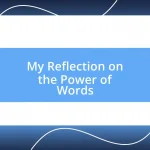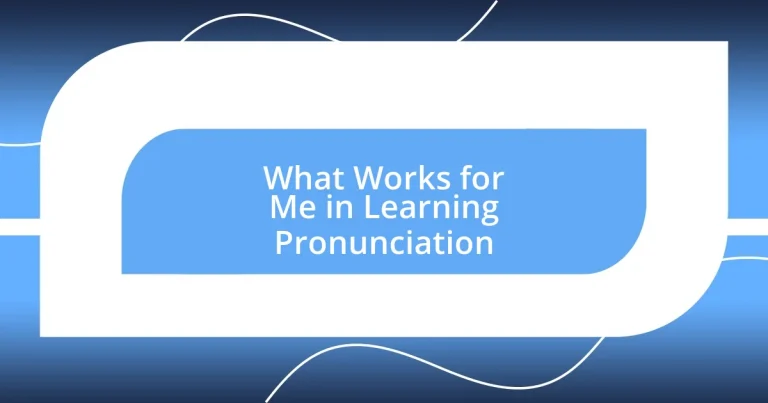Key takeaways:
- Pronunciation challenges arise from unique sounds and ingrained speech patterns, requiring unlearning of old habits alongside practice.
- Effective listening techniques, such as active listening and repetition, enhance understanding and pronunciation skills through engagement with native speakers.
- Recording and analyzing speech, along with building consistent practice routines, significantly aids in identifying flaws and improving pronunciation over time.
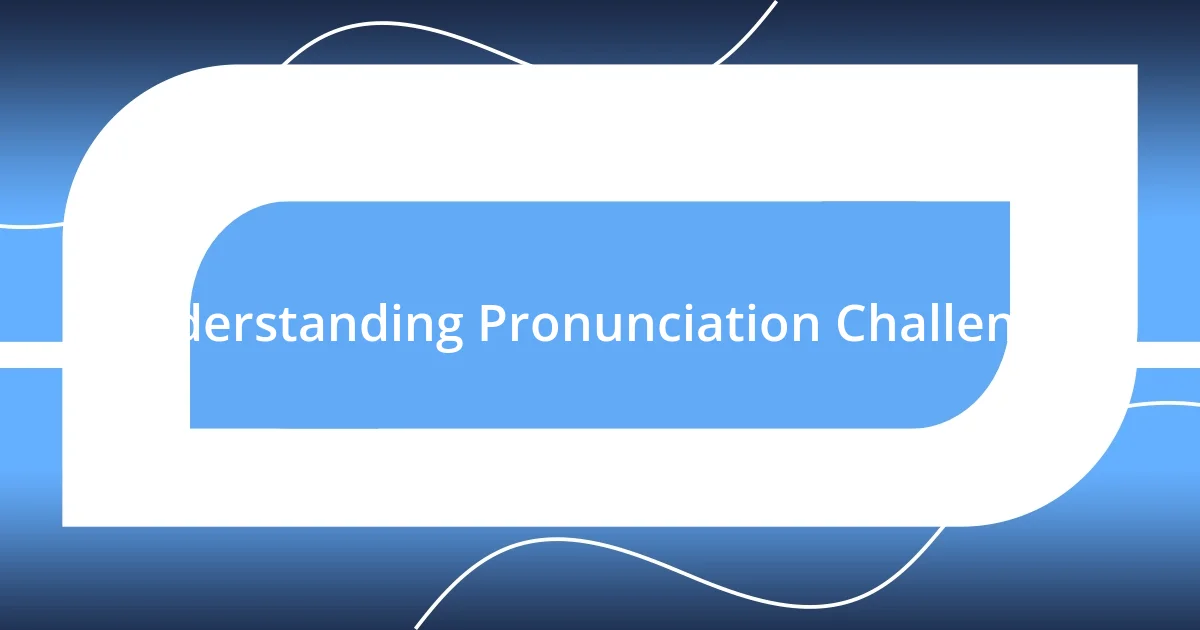
Understanding Pronunciation Challenges
When I first started learning a new language, I was shocked at how many sounds didn’t exist in my native tongue. For instance, the subtle differences between “th” in “think” and “the” were like learning to juggle with my tongue! These unique phonetic challenges can be incredibly frustrating, often leading to misunderstandings. Have you ever felt your heart race when trying to pronounce a word you knew you were getting wrong? It’s an all-too-common experience.
Another hurdle I encountered was the rhythm and intonation of speech. I remember practicing the sentence “I didn’t say he stole the money” in different ways, hoping to convey the right emphasis. It struck me how a slight shift in tone could change the entire meaning! This realization made me aware of the nuances that pronunciation encompasses. How often do we overlook these factors in our daily conversations, thinking they’re insignificant?
Moreover, I’ve noticed that some pronunciation challenges stem from our deeply ingrained speech patterns. Whenever I attempted to mimic native speakers, my old habits would creep back in, almost like muscle memory. It’s a reminder that mastering pronunciation isn’t just about sounds—it’s about unlearning and rebuilding our linguistic habits. Have you experienced a similar struggle with letting go of the way you’ve always pronounced words? It can be a daunting but rewarding journey.
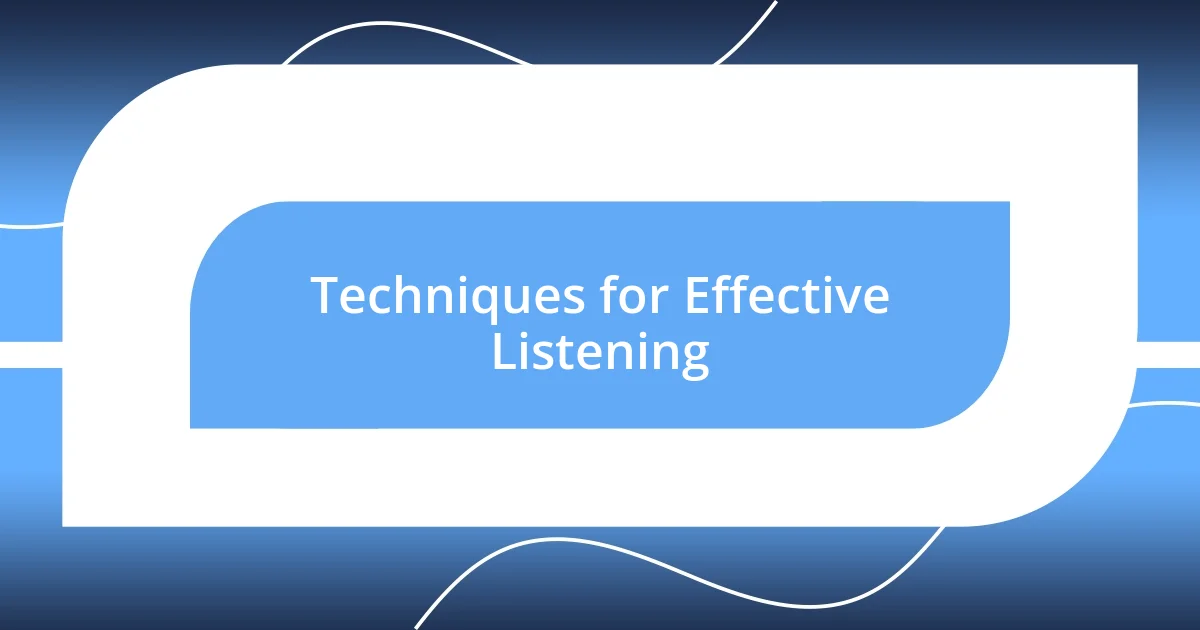
Techniques for Effective Listening
Effective listening is a cornerstone of mastering pronunciation. I remember sitting in a coffee shop, earbuds in, completely immersed in a podcast. It was fascinating to hear how native speakers seamlessly flowed through phrases. This experience taught me the importance of actively engaging with what I hear. Instead of merely letting the sounds wash over me, I started focusing on specific words and their sounds, which amplified my understanding.
To enhance your own listening skills, consider these techniques:
- Active Listening: Engage fully when listening. Don’t just passively absorb the sounds; think about what you hear.
- Repetition: Listen to the same audio multiple times to catch nuances you may have missed the first time.
- Transcription: Write down what you hear. This helps you focus and reinforces your understanding of how words are pronounced.
- Use Diverse Resources: Explore various accents and dialects. This broadens your exposure and adaptability in different contexts.
- Mindful Listening: Pay attention to the rhythm and intonation. Notice how these elements change the meaning of sentences.
By employing these techniques, I found myself not just listening, but truly understanding the intricacies of pronunciation in new languages. The more I practiced, the more confident I felt in my speaking abilities.
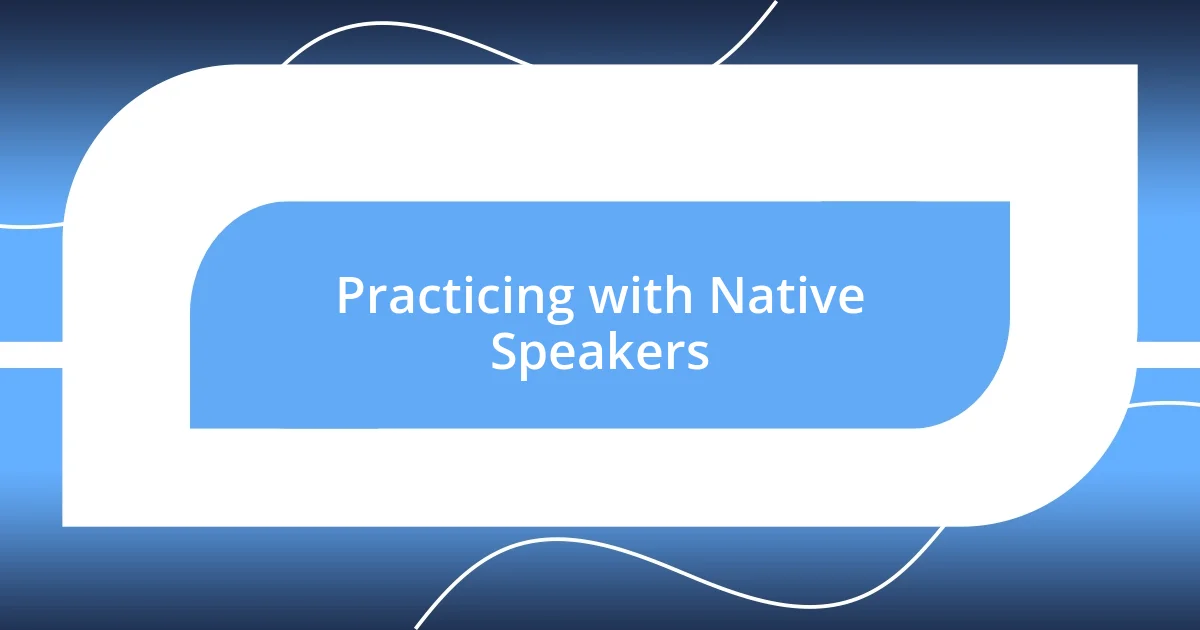
Practicing with Native Speakers
Practicing with native speakers has been a game-changer in my journey to mastering pronunciation. I recall my first conversation with a fluent speaker; my nerves were sky-high, and I stumbled over basic words. Yet, their patient corrections and friendly encouragement made me realize that speaking isn’t just about getting it right—it’s about making connections and learning through experience. Have you ever noticed how much easier it is to absorb pronunciation tips when they’re reinforced in a real conversation?
I’ve also learned that every interaction provides a unique opportunity to adjust my pronunciation in real-time. For instance, during a language exchange, I noticed that my new friend would naturally elongate certain vowels. I started mimicking her, and it felt unnatural at first, almost forced. However, I grew more comfortable with each attempt and actually began to hear the difference in my own speech. It’s like riding a bicycle—at first, you wobble; then, suddenly, you’re gliding along seamlessly. Has practicing with someone experienced changed your perspective on language learning?
What I appreciate most about speaking with native speakers is the wealth of cultural nuances they bring to pronunciation. I distinctly remember a time when a native speaker pointed out how varying my intonation could convey excitement. This simple adjustment transformed my speech from robotic to lively. The interplay of voice inflections was like adding color to a black-and-white picture. Such insights can only come through practice, and they have made my pronunciation feel more authentic.
| Benefits | Personal Experience |
|---|---|
| Real-time Feedback | Corrected my mistakes during conversations, boosting my confidence. |
| Cultural Context Understanding | Learned nuances like intonation changes that convey emotions, making my speech feel authentic. |
| Enhanced Listening Skills | Listening to native speakers adapted my ear to their rhythms and sounds. |

Utilizing Technology for Learning
Utilizing technology has completely transformed how I approach learning pronunciation. I remember stumbling upon a language learning app that featured voice recognition technology. It was like having a personal tutor available 24/7! Each time I practiced a word, I received immediate feedback on my pronunciation. Have you tried apps that offer instant analysis? It’s surprisingly rewarding to see my progress tracked over time, almost like keeping a diary of my speaking journey.
Another effective tool in my arsenal has been online pronunciation videos and tutorials. Just the other day, I spent a good hour watching short clips where experts demonstrated subtle mouth movements for various sounds. At first, I felt a bit self-conscious mimicking them, but the more I practiced, the more natural it became. Do you ever find that visual aids can make complex ideas more digestible? Those visuals not only highlighted the mechanics of pronunciation but also helped me internalize what to do with my own mouth when forming tricky sounds.
Lastly, I cannot recommend using language exchange platforms enough. They are not just for chatting; they often have tools that allow you to record your voice and compare it with native speakers. I distinctly remember listening to a recording of my speech and noticing how flat it sounded compared to a native speaker’s lively tone. That stark contrast pushed me to refine my articulation further. Have you ever had your own recordings reveal aspects of your speech you might overlook otherwise? It’s enlightening and sometimes humbling, but these moments truly drive home the importance of technology in my learning process.
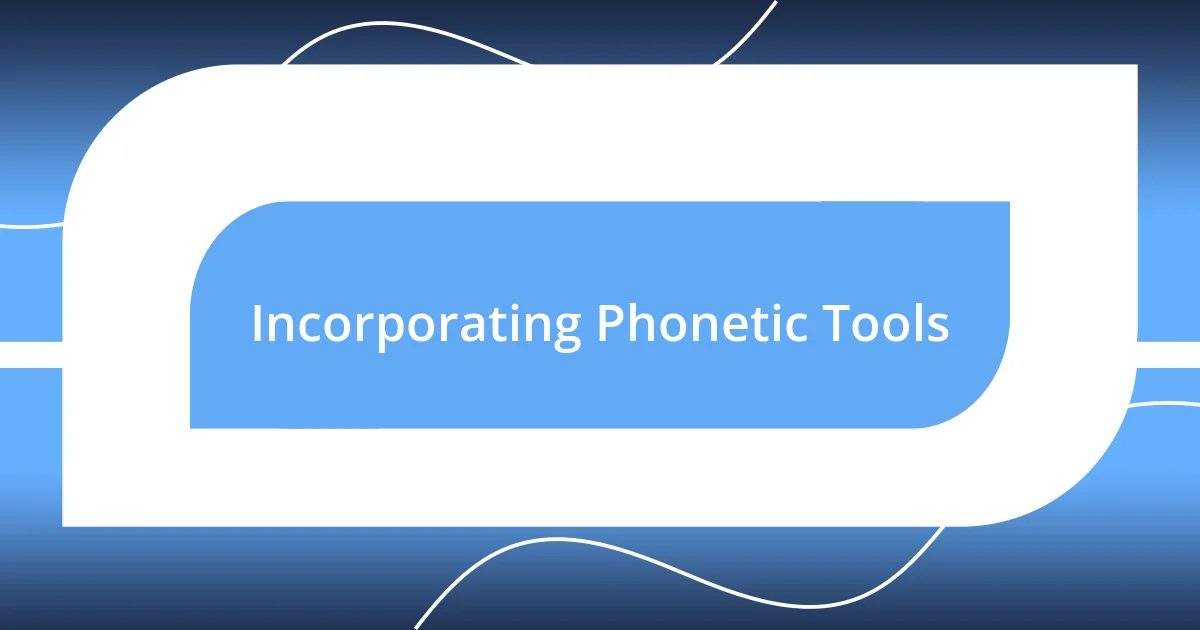
Incorporating Phonetic Tools
Incorporating phonetic tools has been an enlightening experience for me. I remember the first time I tried using the International Phonetic Alphabet (IPA) while practicing new words. At first, it seemed daunting, like trying to decipher a secret code. But once I started breaking down words phonetically, the sounds became clearer. Can you imagine gaining a whole new perspective just by understanding how to pronounce each sound?
One particular phonetic tool that has greatly aided my learning is the use of pronunciation apps that allow you to slow down audio recordings. I vividly recall a session where I repeated the same phrase over and over, adjusting my intonation based on the slow playback. It was as if I could hear the sound patterns dance around me. Who knew a simple adjustment in speed could unlock the subtle nuances of pronunciation?
I also discovered that phonetic charts can be quite helpful. I once spent an afternoon exploring a detailed chart and found myself fascinated by the variety of sounds available in different languages. As I practiced articulating the sounds, I felt a sense of accomplishment—like I was assembling pieces of a puzzle. It’s incredible how such tools can bridge the gap between theory and practical application, don’t you think?
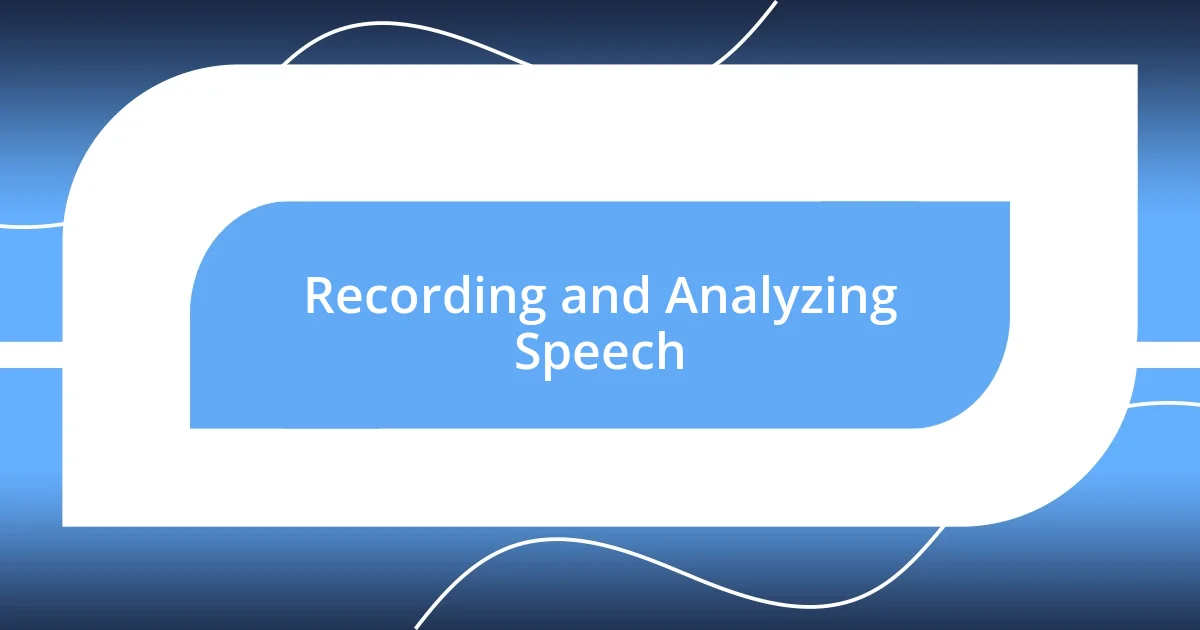
Recording and Analyzing Speech
Recording my speech has been a game-changer in my pronunciation journey. I still remember the first time I hit the record button on my phone, my heart raced with anticipation. Listening back to my voice was both enlightening and a bit cringeworthy. Have you ever experienced that feeling? Hearing my pronunciation flaws gave me a clearer picture of where I was falling short. It became an invaluable tool for self-correction, guiding me toward improvement.
Analyzing those recordings deepened my understanding of rhythm and intonation. One time, I recorded a short conversation with a language partner and played it back while following along with the script. I was surprised by how my stress patterns differed from theirs. Can you relate to the discovery that some sounds just didn’t convey the same energy? That realization pushed me to practice specific phrases repeatedly, focusing on matching their cadence.
I also found that playing my recordings side by side with native speakers was an eye-opener. I distinctly remember struggling to pronounce a tricky sound—“th”—and recorded multiple attempts. Comparing my recordings with a native speaker’s version was almost like holding up a mirror to my progress. Have you ever been shocked to hear how different your pronunciation sounds compared to someone else’s? It can be a humbling experience, but each epiphany brought me one step closer to mastering those elusive sounds.
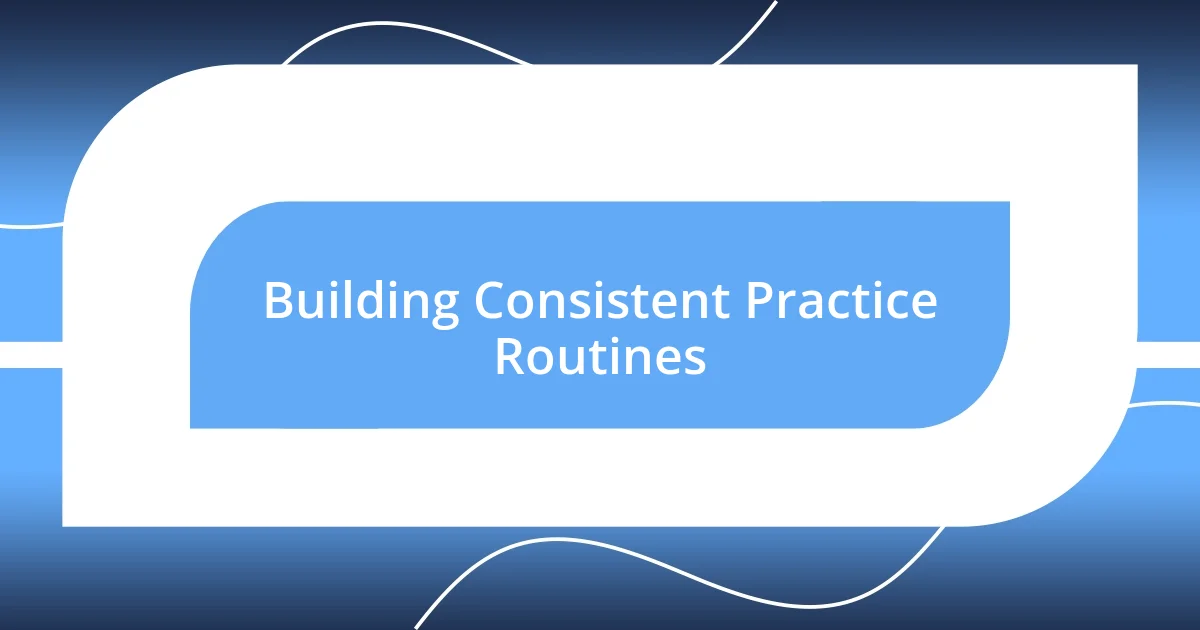
Building Consistent Practice Routines
Building consistent practice routines has been a cornerstone of my pronunciation development. I can still picture those mornings when I dedicated just 10 minutes to focused practice. Letting the sounds wash over me while I repeated phrases felt almost meditative. Have you ever found that carving out small pockets of time can yield big results?
One method I found incredibly useful was setting specific goals for each practice session. For example, I often focused on one challenging sound per week. Last month, I zeroed in on the “r” sound, and transformed my approach by isolating it in words and gradually incorporating it into sentences. It was rewarding to notice my improvement as the week progressed. The thrill of hearing myself finally pronounce “bird” correctly lifted my spirits! How do you celebrate your small wins in pronunciation?
Additionally, I discovered the power of accountability by sharing my practice goals with a language partner. Knowing that someone else was aware of my journey motivated me to stay consistent. There were days I felt like skipping practice, but recalling our conversations kept me on track. I remember feeling an inexplicable burst of joy when my partner complimented my progress—it reminded me that consistency truly pays off. Have you found someone who encourages you to stay committed?










